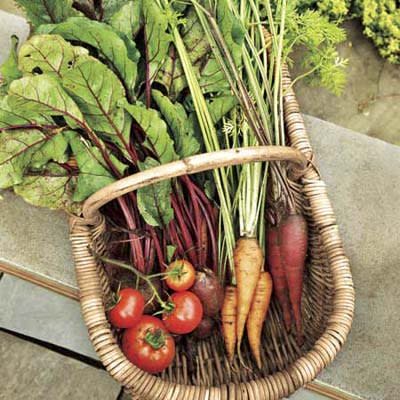4 Expert Tips on Growing Your Own Vegetable Garden

Food for the Family Table:
There's nothing like the earthy crunch of a just-picked carrot or the sweetness of a juicy tomato still warm from the sun. And the taste is even sweeter when it's one you've grown on your own. For parents like Phil Nolan and Michele Rast, backyard vegetable gardening has intangible benefits, too. "We want our kids to appreciate the way things grow and to understand the value of food," Nolan says when asked why he dug up part of the family's New Jersey lawn to put in a formal 18-by-32-foot veggie garden.
Shown: The 576-square-foot plot produces veggies all summer for a family of four, with plenty left over to share. Tidy raised beds and gravel paths make it easy to care for, and evoke an English country garden.
DON'T MISS ALL OUR ADVICE ON GROWING A VEGETABLE GARDEN ON THISOLDHOUSE.COM.

1. Start Small
Why do some fail where others succeed? At least one aspect of soil preparation, plant selection, or growing wasn't right. "Often, just a few tips can make all the difference," says Katie Pencke, who teaches vegetable gardening for the Seattle Tilth gardening education program. Her first tip to newbies: Don't attempt too big a garden. "If you start small, you make small mistakes," she says, "and it's a lot easier to achieve success."
MORE: Fun Projects for Summertime

2. Find the Right Site: Soil, Water, and Sunshine
To grow well, vegetables need good soil, the right amount of water, and sunshine. You can amend poor soil and deal with too much or too little moisture by building raised beds (bottomless frames that hold soil above the grade line) to keep vegetables above muck, or by irrigating in dry weather.
But there is no practical work-around for deep shade. Thus, sunshine is the Number 1 site requirement. See more information on the right amount of sunshine.

3. Take Measurements and Pick Your Plants
Seattle Tilth's community-garden plots are 10 feet square, a nice size for novices if you can spare the space. Create a horseshoe-shaped bed within it, and you'll be able to reach everything from the center or perimeter.
In a small garden it often works best to divide a bed into square-foot sections. Devote each one to the number of plants that can use the space efficiently. So you might put in nine bush beans, since they need about 4 inches between plants, or 16 onions, spaced 3 inches apart. Once you've settled on a tentative site and size for your garden, sketch various plans for planting beds and paths on paper to help you choose a design. If you are planning a larger garden, see our additional tips.
More: How to build raised garden beds

4. Create Optimal Conditions With Compost
Every vegetable garden benefits from a few inches of compost each year. But what about adding lime, other trace minerals, or fertilizer? To learn what you need, get a soil test. The University of Massachusetts offers a $13 test to gardeners in all states that measures pH levels and any heavy metals, and identifies nutrients and organic matter that plants need.
Shown: Finished compost looks like rich organic soil-dark and crumbly in texture, with no large chunks of material. To check if yours is ready, grab a handful, put it in a pot, and place a few grass seeds in it.
MORE: Wacky Lawn and Garden Products
SEE ALL THE EXPERT TIPS ON GROWING VEGETABLES ON THIS OLDHOUSE.COM!
